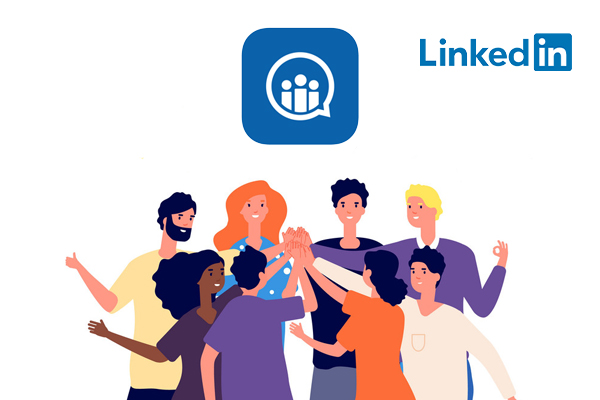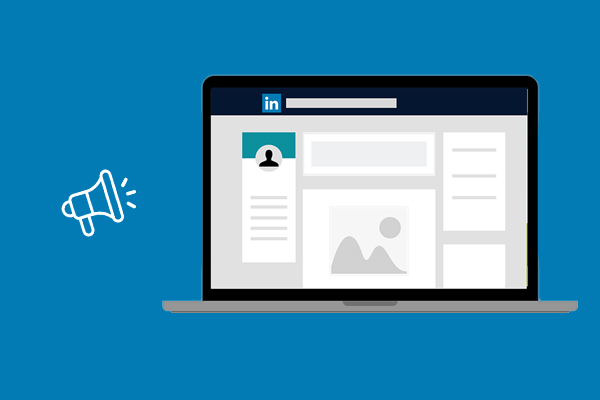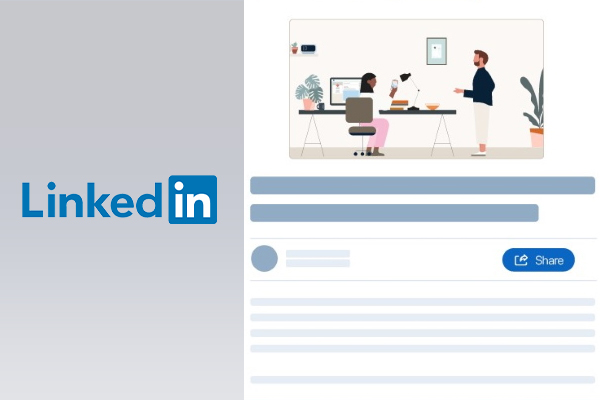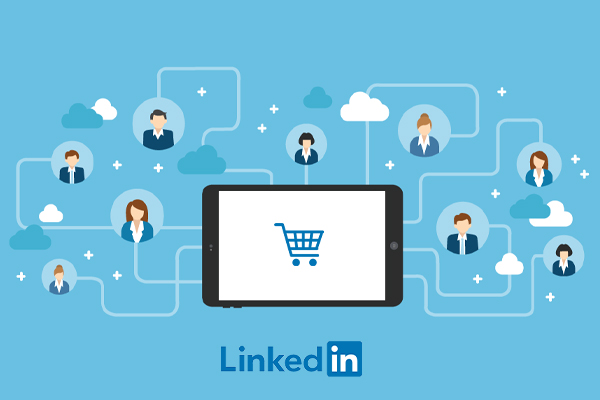With the ever-expanding reach of the internet, companies are now able to hire capable people from all parts of the world. LinkedIn played a great role in it, and that’s why professionals and HRs both want to know how to get more connections on LinkedIn to expand their community.
Now, there’s a clear reason why LinkedIn is the center of attention when it comes to connecting job seekers to hiring agencies, potential partners to executives, and supporting B2B prospects. And that reason is the massive number of users on this platform.
LinkedIn has more than 756 million users that belong to more than 200 different countries all around the world. So, to connect you with such a massive audience, we have compiled some of the most effective and expert suggested tactics that will broaden your professional network.
Table of Contents
- Why Does LinkedIn Connection Matter?
- How to Get More LinkedIn Connections?
- Customize Your Connection Request
- Connect with Your Friends
- Join and Participate in Groups
- Post Visual Content
- Engage with Existing Connections
- Post Consistently
- Promote Your LinkedIn Profile
- Add Keywords to Your Profile
- Write and Publish Articles
- Share Trending Articles
- Engage with Your Connection Updates
- Republish Articles on LinkedIn
- Tag an Influencer in Your Posts
- Buy LinkedIn Connections
- Conclusion
Why Does LinkedIn Connection Matter?
If you’re new to LinkedIn, then you must be wondering, why do even LinkedIn connections matter? Well, the reason is pretty simple and clear. When you have more 1st degree connections, your profile would appear on search results of business tycoons and influencers.
This will increase your chances of getting recognized by someone famous in your niche and getting validated by them. It will not only make you influential in your community but will make it easier for you to get jobs, organize interviews and handle other professional activities.
So, to define it one line, if you get more first-degree connections, you’ll be recognized by second and third-degree influencers on LinkedIn, and it will make you an influencer as well.
1. LinkedIn Algorithm
Now that you know the importance of having more LinkedIn connections, it’s time that you understand how the LinkedIn algorithm can help you gain more connections. LinkedIn keeps updating its algorithm on a regular basis and has recently made some changes in the mid of 2021.
Now, it’s almost impossible to go for all changes, but the one element that stays the same in all algorithm updates is personal interaction. The more you interact with people in your community, the more your profile will be favored by the LinkedIn advanced search algorithm.
You’ll start getting more invitations to connect, more organic reach, and more influence in the community. Finally, now that we’re done with the basic introduction and a short lecture, we’re going to move on to the actual tips that will help you gain 500 connections on LinkedIn or a couple of thousand if you’re too ambitious.
How to Get More LinkedIn Connections?
Let’s be realistic here – we know that getting connections on LinkedIn can be pretty tricky, but it’s not like we’re going to leave you alone with this problem. Following are some of the finest tactics recommended by experts that will help you increase your number of connections.
1. Customize Your Connection Request
Generally, sending a connection request is just clicking the connect button, and you’re done, but if you actually want people to accept your invitations, then you need to customize them. Write a short message while you send the connection request to give it a more personal touch.
Tell the other person that it would be an honor if they accepted your connection request and became a part of their community. Don’t forget that building your network is essential, and for that, you need to make an effort so that your connection requests don’t get ignored.
2. Connect with Your Friends
What better way to get more connected than to make the connection with your already existing friends? Make sure that you send the connection requests to all your friends and connect with them first before you go out seeking validation from influencers of your niche.
Connecting with friends will increase your number of connections and will give you the initial push necessary to attract the new audience and make them send you connection requests.
3. Join and Participate in Groups

To gain more connections, you first need to prove yourself in your community, and the best way to do that is by joining groups. Try to join as many groups as you can relevant to your niche and participate in activities to shine in front of your peers.
Once the people start recognizing you as an active member of the community, they would want you on their connection list, and hence you’ll start getting more connection requests every day.
4. Post Visual Content
When it comes to content, LinkedIn is like any other social media. Even here, the audience enjoys watching visual content and appreciates a good piece. So, try to post as much visual content as you can. Make sure that it’s relevant to your niche so that your target audience likes it.
When people like your content, they want to see more of it, and they send you a connection request to get a regular update whenever you post something.
5. Engage with Existing Connections
It’s not just about clicking connect button, getting accepted, and then moving on at LinkedIn; it’s about building a bond with your connections. You need to make sure that you’re in touch with your existing connections and are interacting with them.
When you care about your connections, they not only stay loyal to you but also recommend your profile to their peers, and you start getting more connection requests eventually.
6. Post Consistently
As much as it’s important to post good content, it’s also important to stay consistent with it. You need to make sure that you’re uploading content on a regular basis at specific times. This will get your audience hooked, and it will also increase your organic reach.
Staying consistent also gives you an edge on the LinkedIn algorithm, and your profile starts getting noticed by other members of your community, hence more connection requests for you.
7. Promote Your LinkedIn Profile

There’s no better way to gain more connections than promoting your LinkedIn profile. You need to let the world know about your profile so that you can gain more connection requests. Speaking of promotion, here are some methods that you can use to promote your profile.
Add Your LinkedIn URL to Your Email Signature
Emails are a professional way of communication, so make sure to include your LinkedIn profile URL in your email signature so that everyone you send an email to knows about your profile. Someday they will check out your profile and will connect with you to stay in touch.
Using Bio Spaces
To emphasize the more important facts about yourself, you need to put them in one line, and to break the line, you need to use bio spaces. Bio spaces are actually extra spaces that break the line to highlight specific information and can show a key selling point of your personal brand.
Post the Link in a Status Update, Tweet, Pin, Video, and Photo
This step is relevant to direct social media platforms. Whenever you post a picture on Instagram, a pin on Pinterest, put a status update on WhatsApp, or write a tweet on Twitter, make sure to paste your LinkedIn profile URL. People will eventually notice that you’re creating content on LinkedIn as well, and they will try to connect with you there as well.
8. Add Keywords to Your Profile
Adding keywords to your profile makes it easier for people to find you and hence connect with you. So, do a bit of research and find some good keywords relevant to your niche and embed them in your profile. You’ll be surprised to see how many connections you’ll get by this tip.
9. Write and Publish Articles
People like to read informative and interesting stuff here on LinkedIn, so feel free to write your articles on this platform. You can use long-form posts to tell an inspiring story or a valuable life experience to help out your peers. The more interesting your articles are, the more recognition you’ll get in your community, and it will lead you to get more connection requests.
10. Share Trending Articles

If you’ve got your hands on an exotic and trending article about a topic on your niche, then make sure to share it on your profile. It will show your audience how knowledgeable and active you are, and your number of connections would increase just by sharing a couple of good articles.
11. Engage with Your Connection Updates
Whenever an update comes from one of your connections, you need to engage with them and interact appropriately. For example, if you get a notification that people you’re connected with has started a new job, then congratulate them and wish them the best of luck.
These small gestures and interactions make your profile valuable for the LinkedIn algorithm, and it starts recommending your profile to other people, which boosts your odds of getting more connection requests.
12. Republish Articles on LinkedIn
If you’ve written articles on other platforms before, then it’s time you use them again. Start republishing those articles on LinkedIn, and it will give your audience something new to read. It makes the whole posting process easier since you already have the content.
When your audience reads good articles written by you, they get impressed and share them with their peers. This sharing increases your organic reach, and eventually, you start getting more connection requests.
13. Tag an Influencer in Your Posts
Getting attention from influencers is a great way to get more connections. To get their attention, you have to tag them in your posts. Make sure that posts are relevant to them; otherwise, it won’t work out well.
Now, it might take some time, but if they do notice you, they will start reacting to your posts. You’ll get validation from them, and it will lead you to get more connection requests from people of your community.
14. Buy LinkedIn Connections
If you’ve tried every trick in the book and yet you haven’t achieved your goal, then don’t give up on your goal and just buy LinkedIn Connections from GetAFollower. GetAFollower is a name of trust when it comes to providing LinkedIn connections, and we have provided millions of followers to our satisfied customers all over the world.

Buying LinkedIn connections from us will boost your profile and will make you an influencer in the community. So, if you want to get a bunch of LinkedIn connections at affordable prices, then drop everything and visit GetAFollower right now.
Conclusion
All the tactics that we brought for you in today’s article are proven and tested, so all you need to do is apply them consistently and then give it some time to settle in the changes. Eventually, you’ll achieve your goal and will get more connection requests than you can handle.






